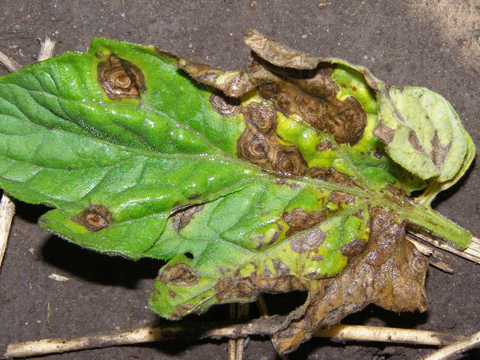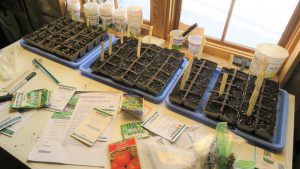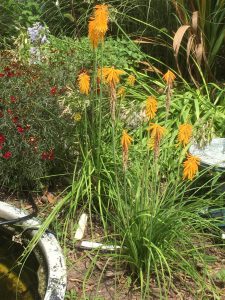Questions from Randy:
I am starting my own elevated garden bed at home and I need advice.
1.) What vegetables would you recommend starting off with in this hobby for beginners?
2.) How often would you recommend watering these vegetables and with how many inches of water?
3.) What brand or type of vegetable fertilizer would you recommend for this garden bed?
4.) What brand or type of soil would you recommend for this garden bed?
5.) Do you have a calendar or schedule available that would help us to determine when to plant, harvest, and perform maintenance on vegetables?
Hancock County Advanced Master Gardener Bruce answers:
Hi Randy,
This should help you get started for a successful gardening experience. I am answering in the order that you asked your questions.
1. Make sure you grow what you like to eat! Easy and quick vegetables are radishes, leaf lettuce, green beans, and carrots. All of these can be planted by seed. Tomatoes and peppers are easy but buy starts from the garden center.
2. Watering needs vary based on the soil, temperature, wind, and drainage, There is no hard and fast rule. Put your finger in the soil about an inch deep. If it feels dry then water. With an elevated bed, you may need to water daily.
3.When you go to the garden center you will see all types of fertilizer with numbers like 10-10-10, 5-10-5, 20-20-20..
The three numbers on fertilizer represents the value of the three macro-nutrients used by plants. These macro-nutrients are nitrogen (N), phosphorus (P) and potassium (K) or NPK for short. Look for a fertilizer with an NPK of 5-10-5, 6-10-4 or something similar. You want a fertilizer with a higher P (phosphorus) number than the others. P encourages more flowering which means more fruit. N will encourage new growth which may be at the expense of flowers. The K is for general health of the plant.
4. Compaction of soil is one of the problems of container, raised bed, or elevated gardens. You can mix your own, buy a raised garden blend, or amend potting/garden soil. The economical method is making your own which is 1/3 top soil/ 1/3 compost/manure/peat moss, and 1/3 vermiculite. Raised garden bed soil requires the least amount of work . All you do is open the bag and dump it in. It usually has fertilizer already added, but it is expensive. With garden/potting soil I would add vermiculite to help eliminate soil compaction. Use 2/3 potting soil and 1/3 vermiculite. Brand doesn’t really make a difference. It’s whatever you are comfortable spending.
5. Here are a couple of resources to use as a planting guide:
https://www.purdue.edu/hla/sites/yardandgarden/extpub/indiana-vegetable-planting-calendar/.
https://www.johnnyseeds.com/growers-library/growing-center.html
If you buy seeds, the package will tell you how many days till the vegetable is ready to harvest. Any vegetable starts should also give you the same information on their plant tag..
6. The main thing is to enjoy and have fun growing your own vegetables. Some plants don’t make it for various reasons. If I had a dollar for every plant that died, I would be living the good life in Hawaii!. We are here to help you be successful in your gardening experience. Don’t hesitate to contact us in the future. I hope this gets you off to a good start.
Final response from Randy:
Great email and advice!
I will be in touch.
Be well,


